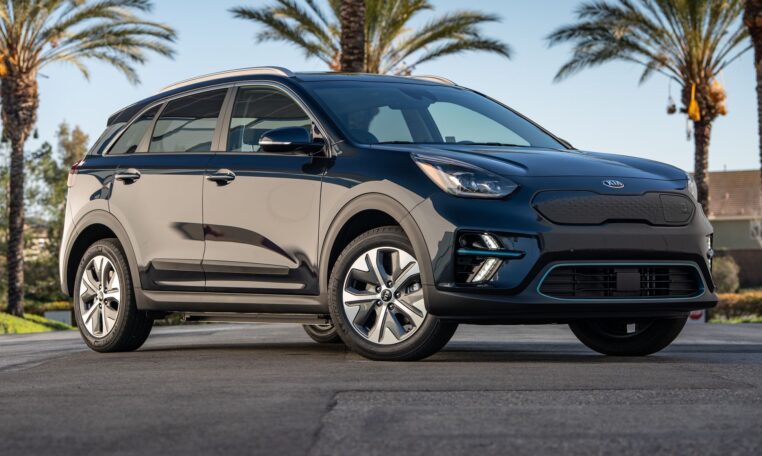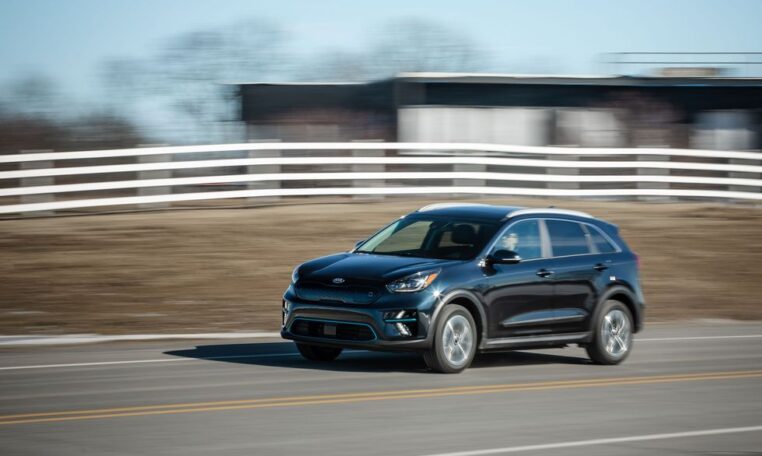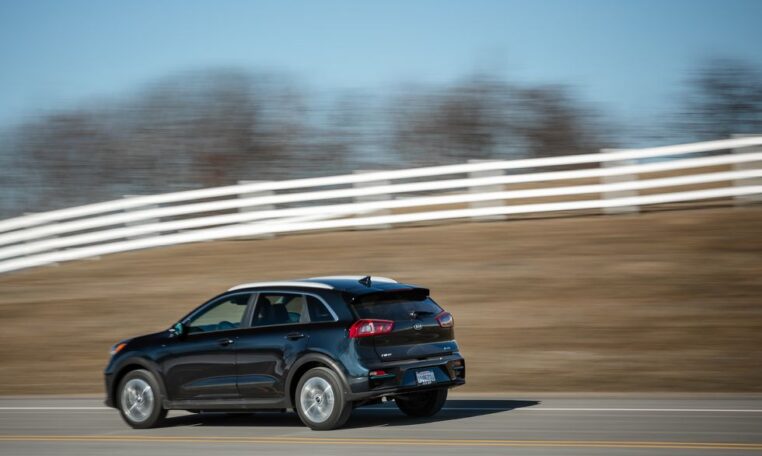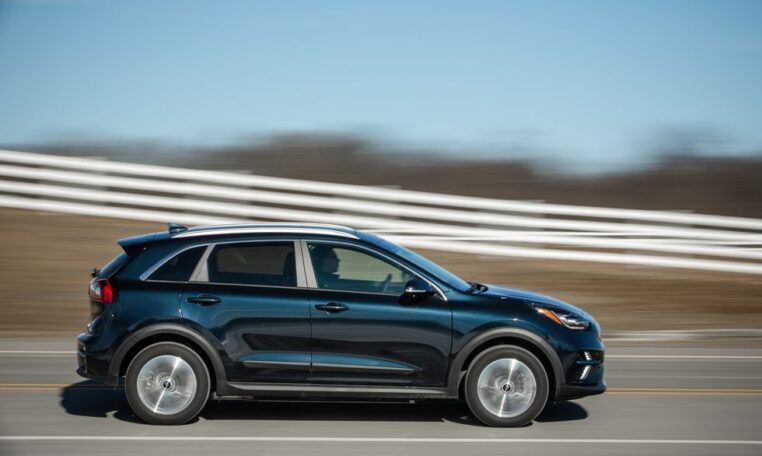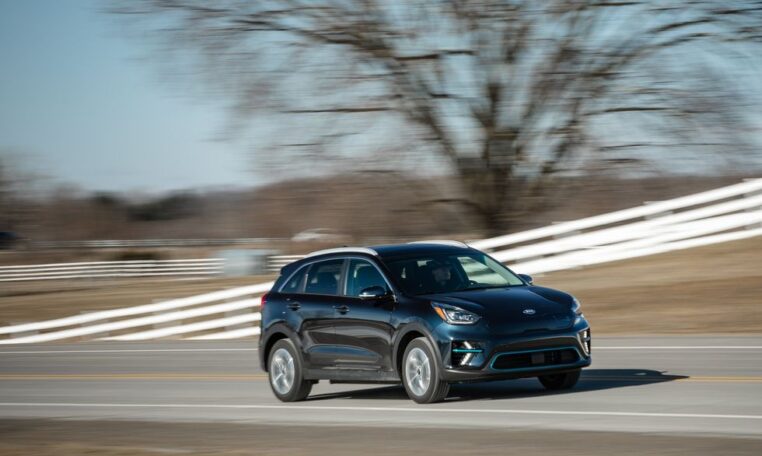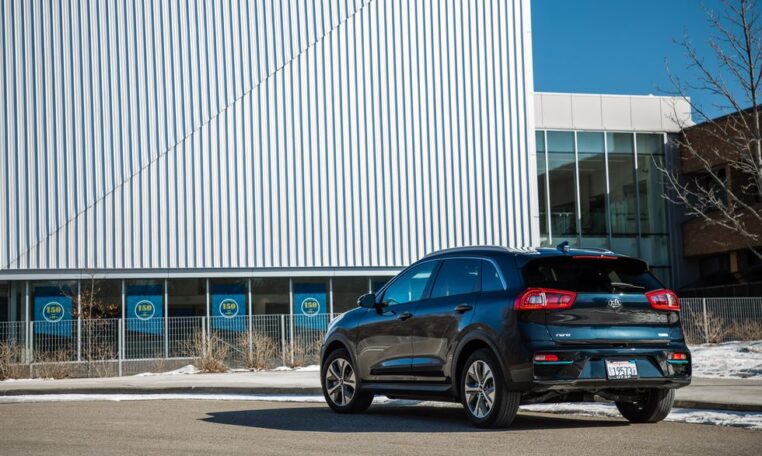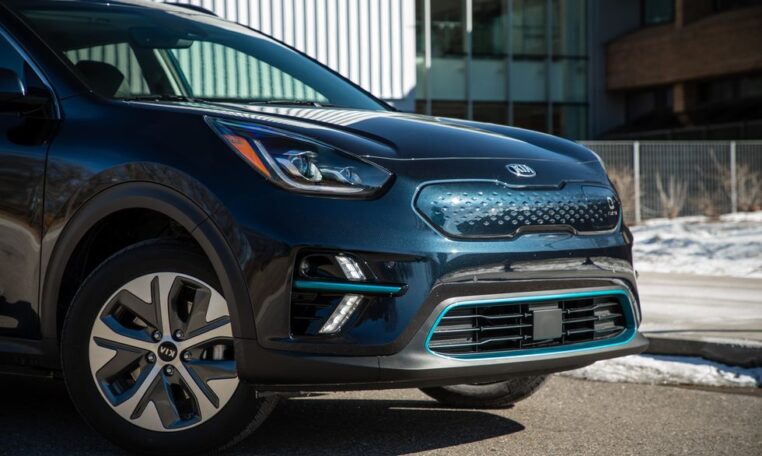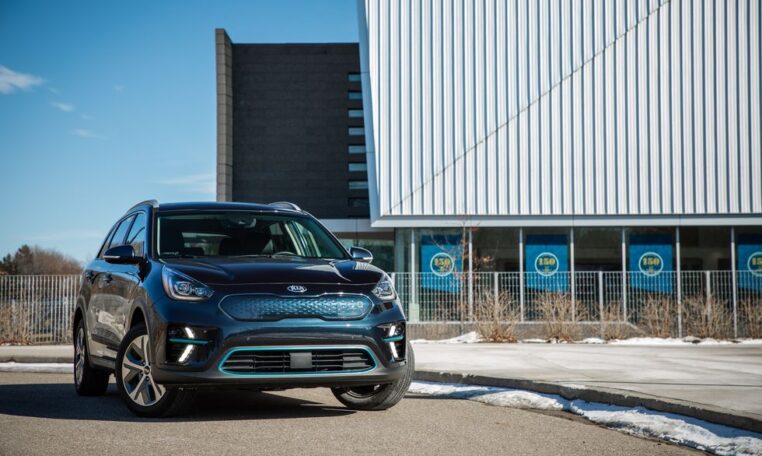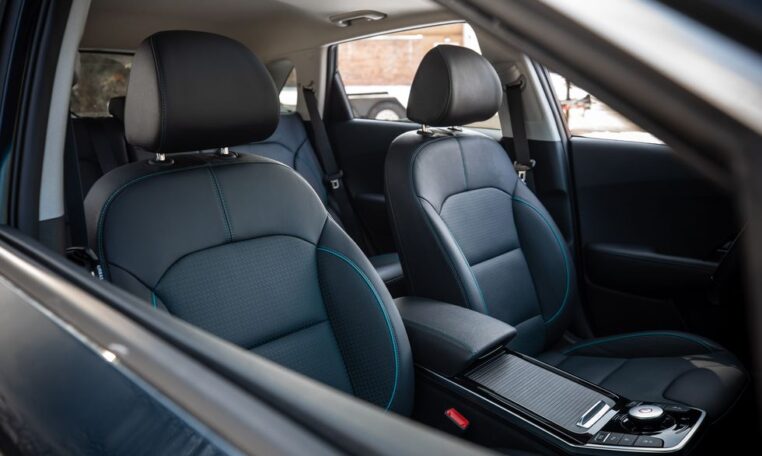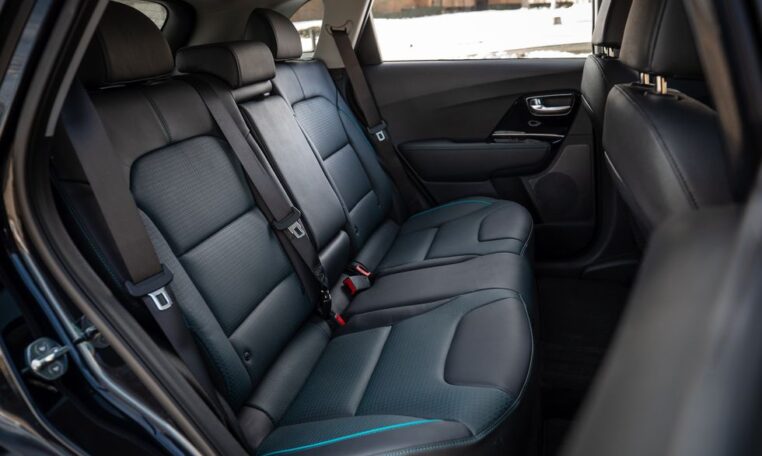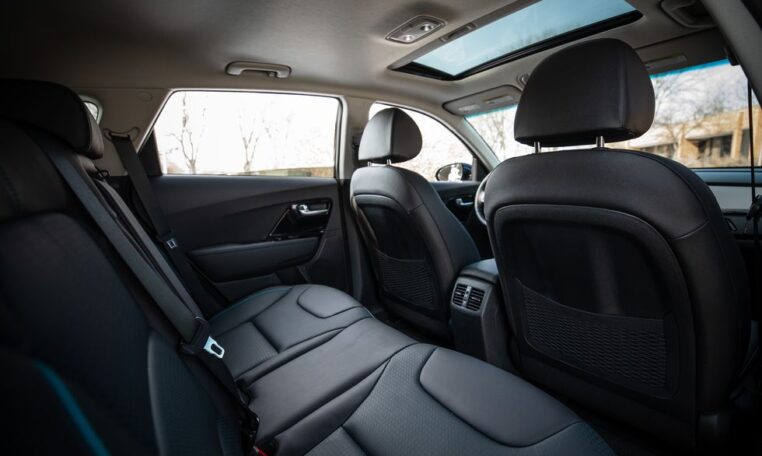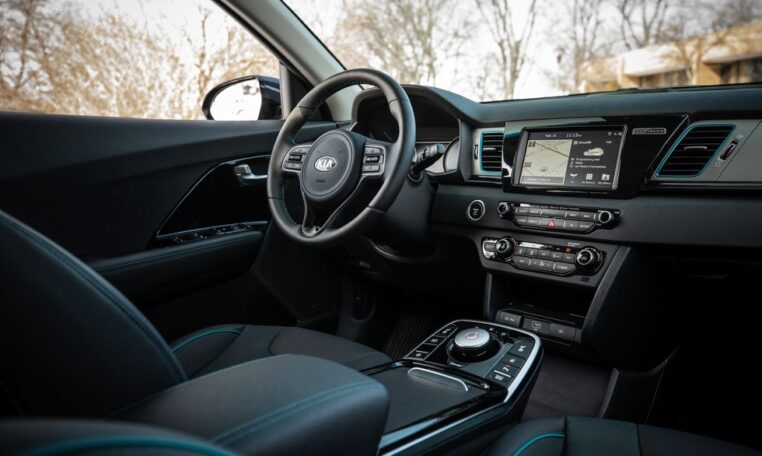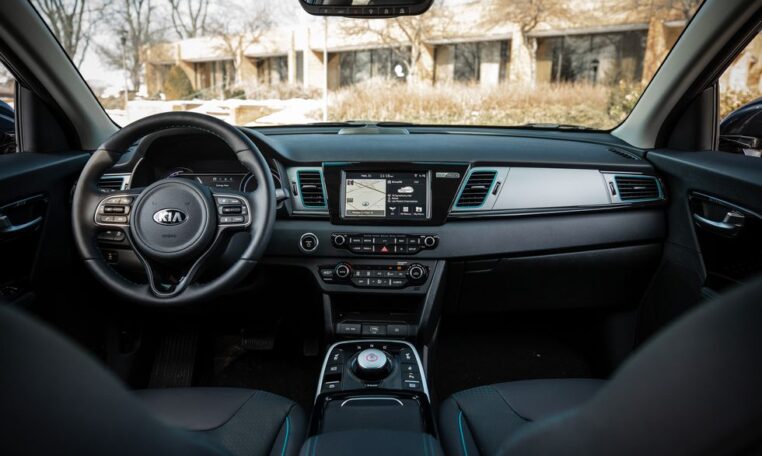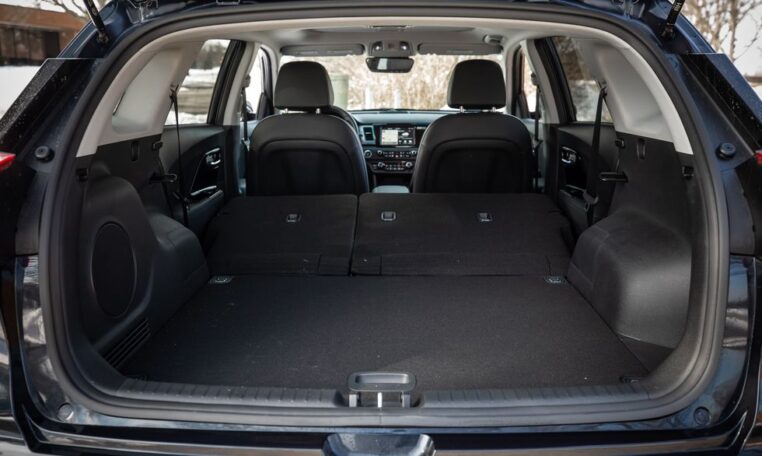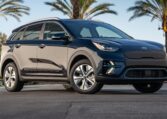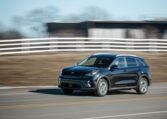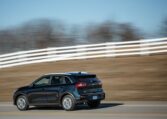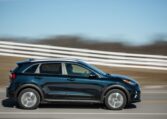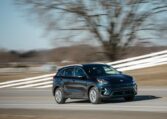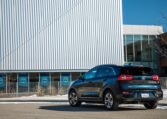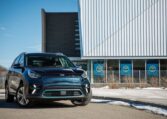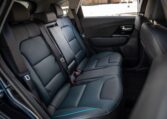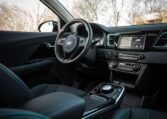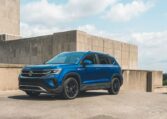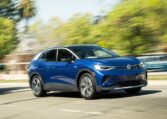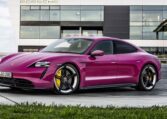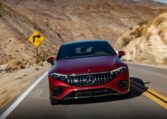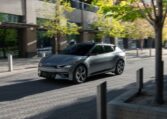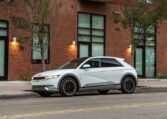NEW 2022 Kia Niro EV
Overview
The Kia Niro EV isn’t an exciting option in the EV marketplace, but it is a great choice for buyers that are looking for an affordable and environmentally friendly vehicle. The Niro EV is based on the separately reviewed Niro hybrid, and retains that model’s crossover capability and design. The EV has an EPA-rated range of 239 miles and comes standard with tons of features, such as Kia’s full lineup of driver-assistance features, DC fast charge capability, and steering wheel paddle-controlled regenerative braking. Competitors such as the Nissan Leaf, Chevrolet Bolt EV, and Tesla Model 3 are similarly priced, but don’t have the crossover styling or extensive warranty coverage that Kia offers on the Niro EV. In all, the good-looking Niro EV is well placed in a very competitive corner of the EV market.
What’s New for 2022?
Having been introduced as a new model for the 2019 model year, the Kia Niro EV doesn’t see a lot of updates for 2021, but new headlights and taillights freshen up the exterior. Both trim levels get new infotainment displays; the EX trim gets an 8.0-inch screen, while the Premium EX trim gets a 10.3-inch screen.
Engine, Transmission, and Performance
The Niro EV is powered by a single electric motor that produces 201 horsepower, which is sent through the front wheels by a 1-speed direct drive transmission. The Niro EV puts up a brisk zero-to-60-mph time of 6.5 seconds, which is quicker than the Chevrolet Bolt EV and just a tenth of a second slower than the Hyundai Kona EV. It is possible to drive the Niro EV with just one pedal thanks to regenerative braking (which recharges the car as you brake), but it requires the use of paddles mounted on the steering wheel, which get tiresome to control after a while. The Niro EV offers a more refined ride than its competition; wind and road noise are far less noticeable than in the Bolt EV, Kona EV, or Model 3.
Range, Charging, and Battery Life
The 64.0 kWh battery capacity of the Niro EV is right in line with the rest of the segment, besting the Leaf’s capacity, matching the Kona EV and Soul EV, and falling just short of the Bolt EV. The 64.0 kWh battery in the Niro EV affords it an EPA-rated range of 239 miles, which is average among the competition. The battery can be recharged using either a 120-volt or 240-volt connection, but the two connections offer drastically different charge times. On a 240-volt connection, the car can be recharged in about nine hours. For people that can’t wait that long, the Niro EV offers standard DC fast charge capability, allowing you to recharge the battery to 80 percent in an hour with a 100kW connection.
Fuel Economy and Real-World MPG
In our testing, the Kia Niro EV achieved 115 MPGe over our 200-mile highway fuel economy route, beating its EPA rating of 102 MPGe on the highway. Despite the high MPGe mark, we only saw 180 miles of its claimed 239-mile range during the test, which was completed at wintry temperatures. Running the Niro EV in warmer climates should return a more pleasing result.
Interior, Comfort, and Cargo
The Niro EV comes well equipped even in the base EX trim, which has standard power front seats, heated front seats, and a 7.0-inch digital driver display. Upgrading to the EX Premium trim adds on features like ventilated front seats, a power sunroof, and wireless charging. Unfortunately, both trim levels suffer from an excess of black plastic throughout the interior that isn’t pleasant to look at or touch. The Niro EV also has an intuitive two-zone automatic climate control system with an option to turn off the passenger’s climate control if the seat is empty to save energy. This helps the EV maximize efficiency and allows for more of the battery to be used toward driving range. We were able to fit six carry-on suitcases behind the rear seats. The rear seats don’t fold flat, but when they were down we were able to fit 18 carry-ons behind the front seats. Fitting passengers behind the front seats is not ideal–the rear floor is raised to make room for the battery, and it creates a tight fit for rear seat passengers.
Infotainment and Connectivity
The standard infotainment set up in the Niro EV’s EX trim is an 8.0-inch touchscreen infotainment system but the EX Premium trim upgrades the screen size to 10.3-inches and replaces the standard six-speaker stereo with an eight-speaker setup from Harman/Kardon. The larger infotainment display also comes with SiriusXM satellite radio and a voice-activated navigation system. Both setups have Bluetooth connectivity and support Apple CarPlay and Android Auto.
Safety and Driver-Assistance Features
Neither the National Highway Traffic Safety Administration (NHTSA) nor the Insurance Institute for Highway Safety (IIHS) have tested a Niro EV, but the IIHS has tested the hybrid and plug-in hybrid variants of the Niro, which both earned a Top Safety Pick + despite a score of “Poor “in the headlamp category. The Niro EV comes standard with all of Kia’s driver-assistance technology, unlike EVs such as the Bolt EV and Leaf. They both require you to spend more on a higher trim level to unlock the more advanced features. Key safety features include:
- Standard automated emergency braking with forward-collision warning
- Standard lane-departure warning with lane-keep assist
- Standard adaptive cruise control
Browse through the vast selection of vehicles that have recently been added to our inventory.
